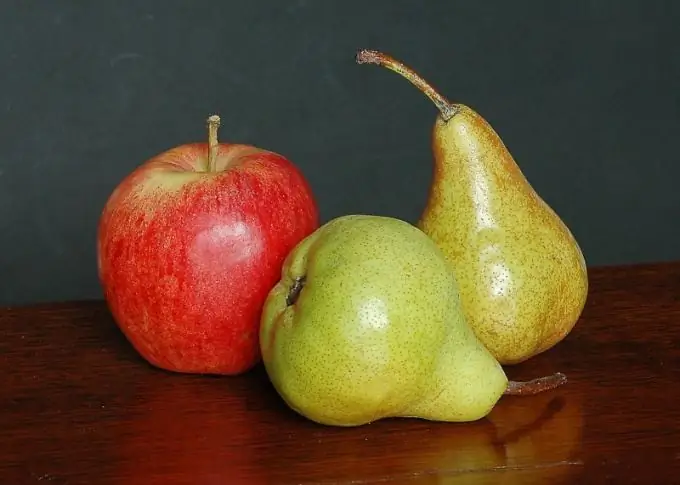Still life is usually called a work of fine art, which depicts inanimate objects - fruits, dishes, household items. Having examined the still life, the viewer can learn a lot about the time when the artist lived, about what surrounded him, what he was interested in. You can draw a still life using any technique. For a novice artist, gouache is most suitable.

Materials and tools
You can draw with gouache on paper or cardboard. A regular landscape sheet is suitable for a still life. As for paper for watercolors, in this case it does not give a big gain - the gouache applied with a dense layer will still hide the texture. But if you are going to tint the sheet with watercolors, and paint objects with gouache, paper for watercolors or paper wallpapers will be just right. You will also need brushes of different types and thicknesses, some of which should be both soft and hard. If this is your first time drawing a still life, you will also need a solid, simple pencil. Gouache needs to be diluted to the state of liquid sour cream. Remember that a lighter tone can be obtained by adding white, and not by blurring, as when painting with watercolor. Also prepare some small jars for mixing paints. Of course, before drawing a composition of different objects, you need to try to depict each of them separately.
Sketch
It is best to learn to draw from life. But you can also depict an imaginary still life. The main thing is that the composition is harmonious. Objects should not hang in the air, so draw a plane on which they will lie - a corner of a table, a shelf, etc. You can also add drapery. If you are going to draw a bouquet or a fruit arrangement, colored paper applique can help. Cut out the items that you would like to combine in your work. Lay them out on a sheet. Try different options. When you think the items are arranged nicely, outline the location of each item. Whether or not to sketch in pencil is up to you. In general, when working with gouache or watercolor, it is better to do without it. But a beginner does not always succeed, so carefully draw the outlines of each object with a thin pencil.
Gouache technique
The basis of gouache work is color spots. Fill the outlines of each item with the desired paint. It should be light enough to apply shadows later. In general, when drawing with gouache, it is convenient to follow the principle "from light to dark". For example, apples can be yellow, red, or green. For the first layer, choose solid colors. After completing one path, wait for the drawing to dry, and only then move on to the next subject. This is especially important if objects are close together. The gouache dries very quickly, so the wait will be short-lived. Draw finer details. This can be, for example, red stripes on a yellow apple, veins on a leaf, etc. Apply shadows. To do this, take a paint of the main color, but without white. You can even add a little black or brown to it. The shadow is, of course, overlaid on the less lit side of the subject. There should not be a sharp transition to the light part; it is better to blur the border or mark it with a curved line. You should not outline the contours with dark paint. If the edges are jagged and you don't like it, smooth them out with the same paint you used to paint over the subject.






